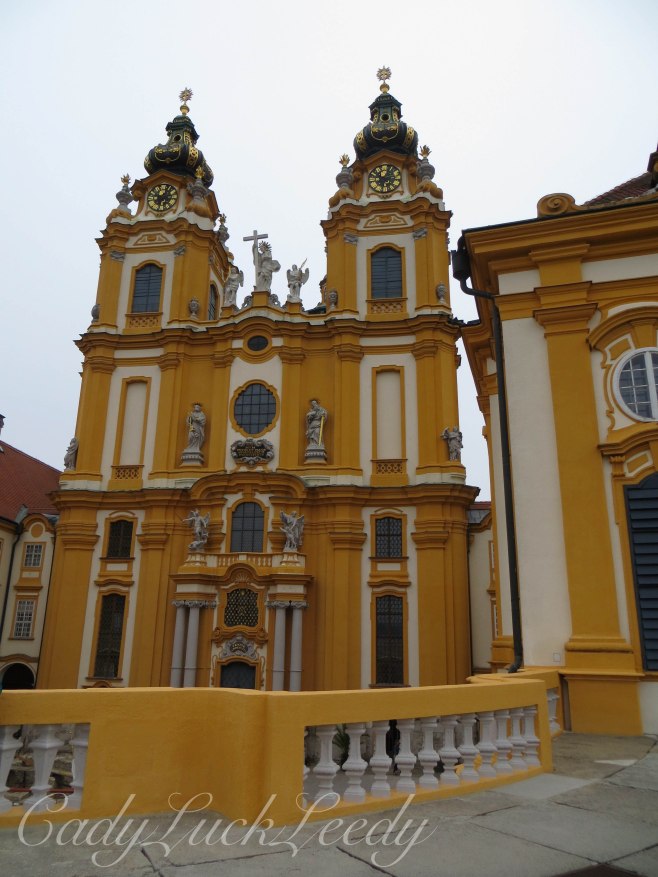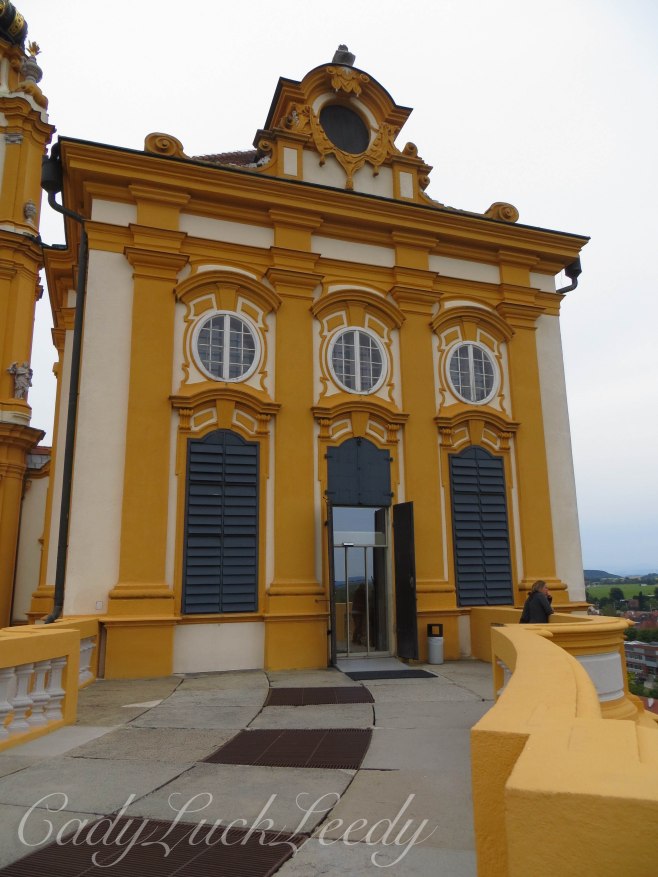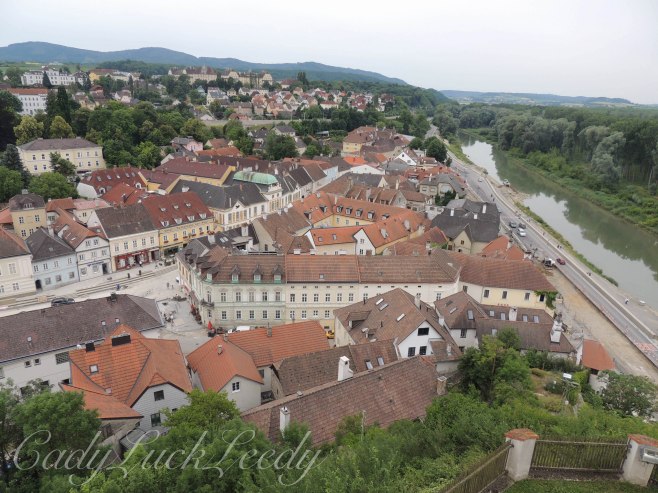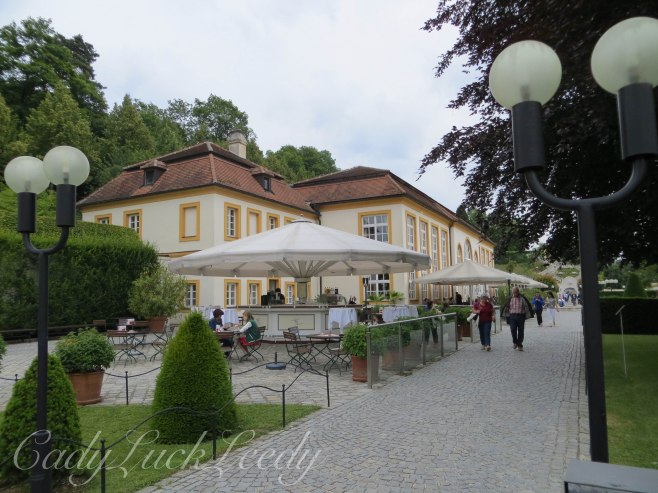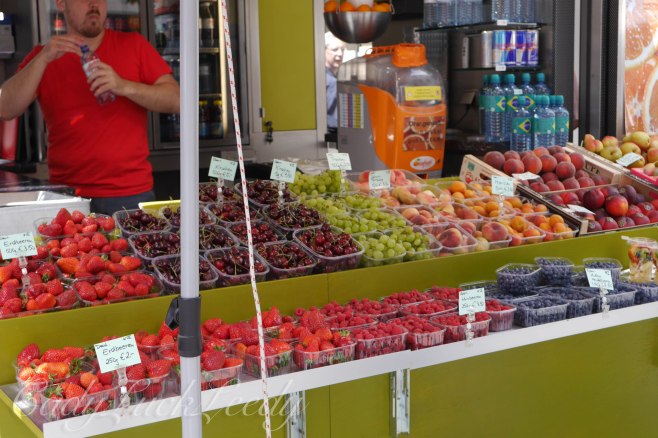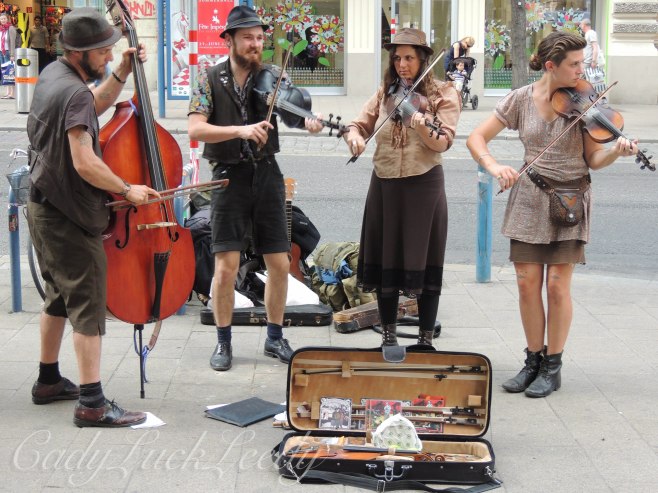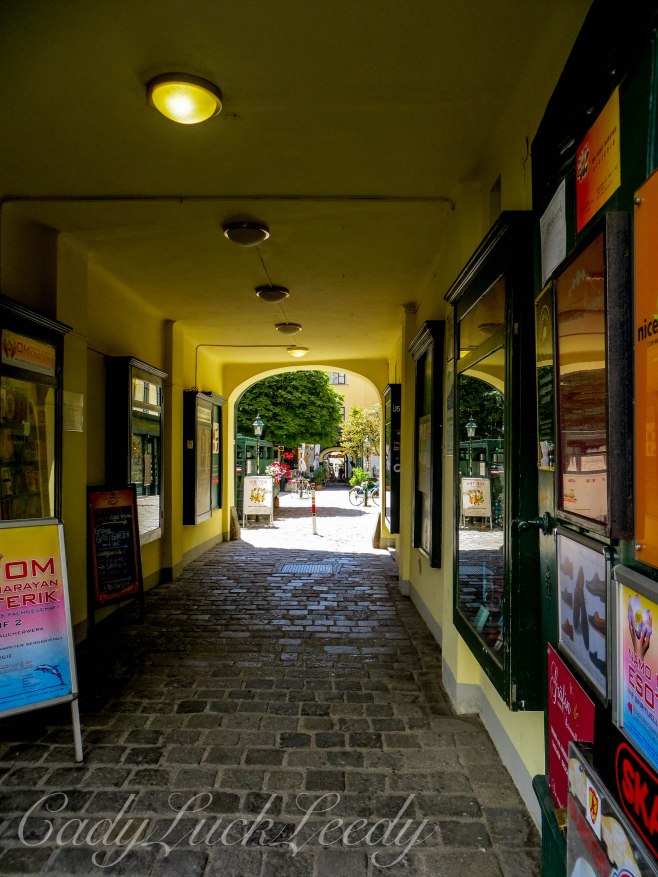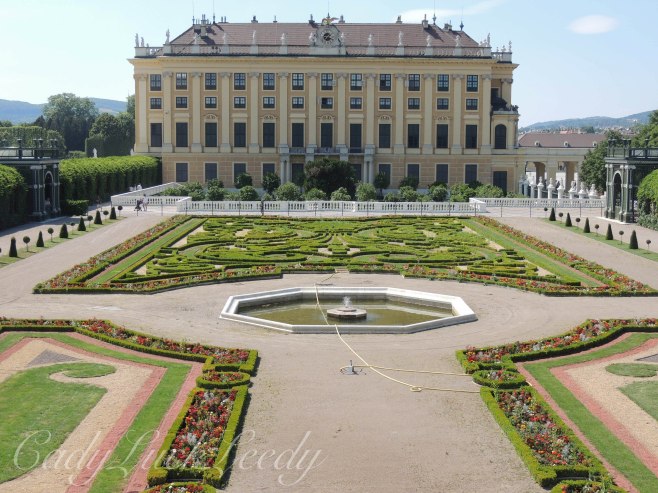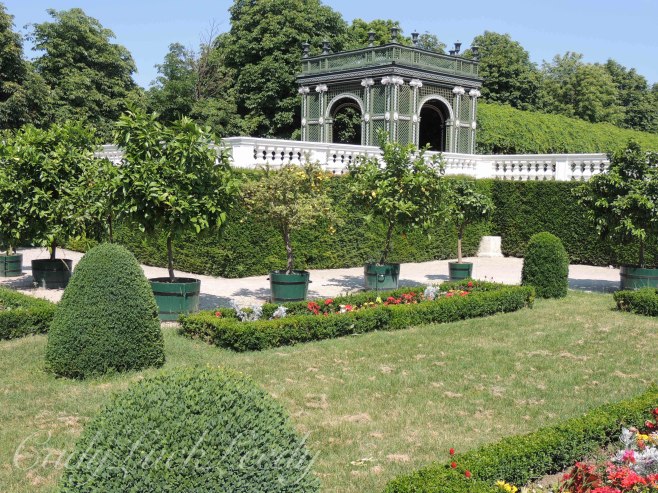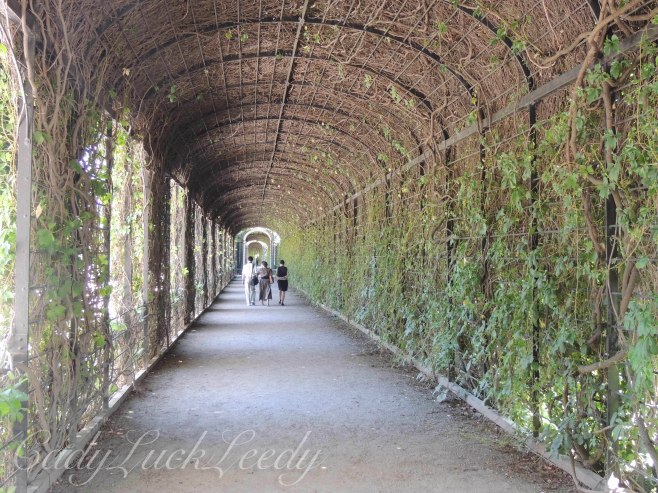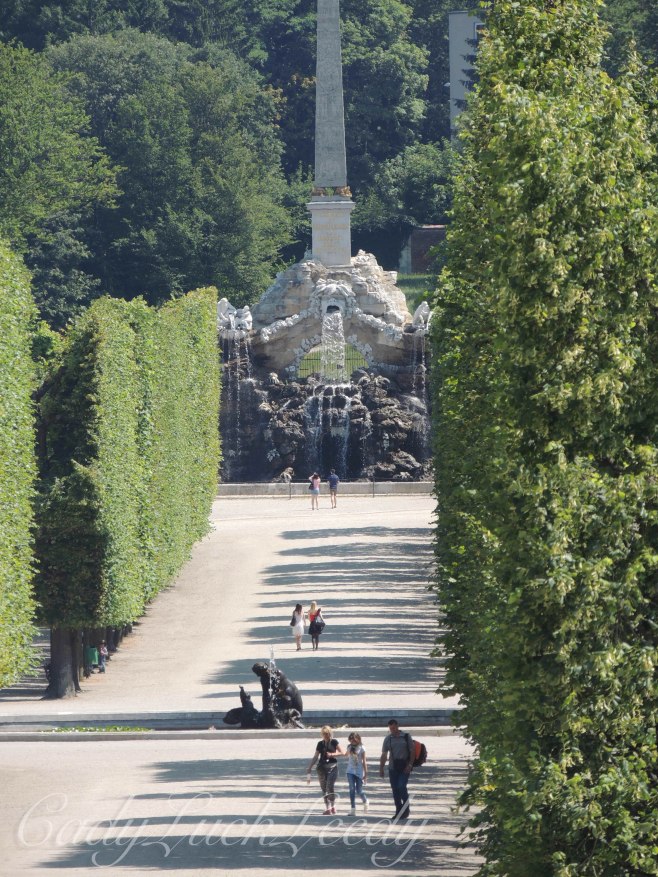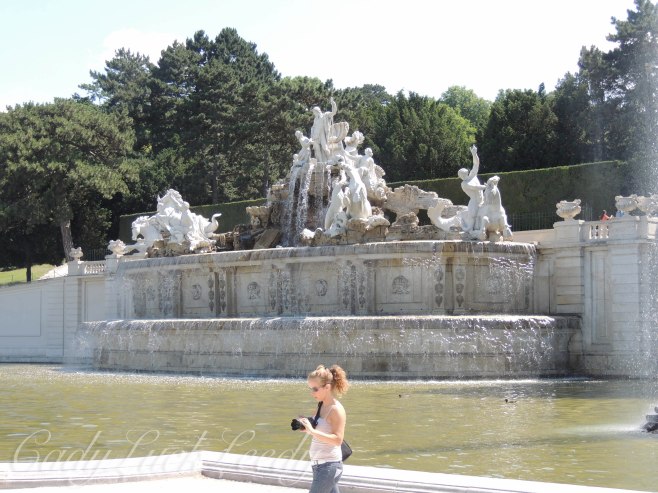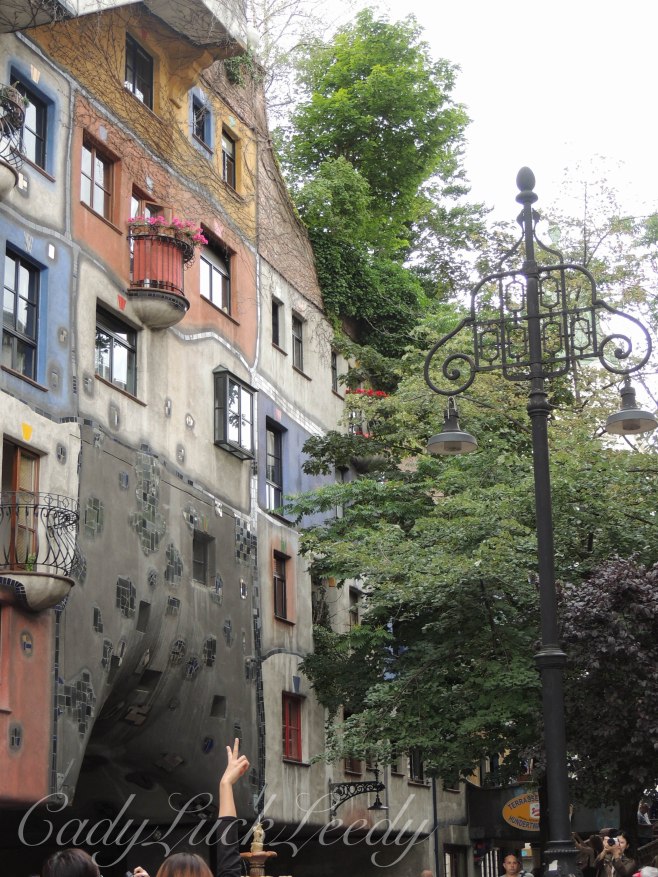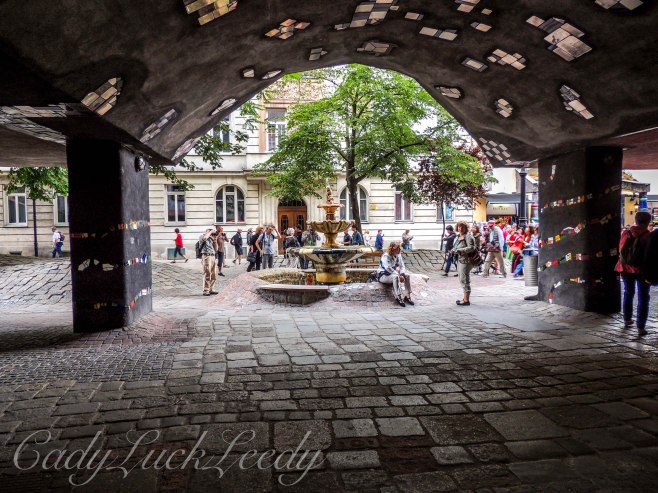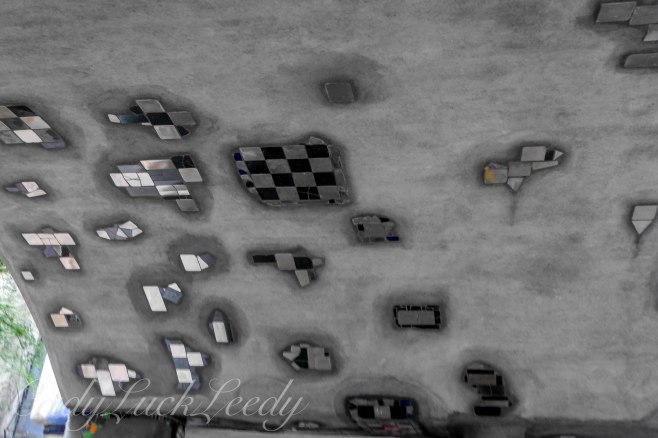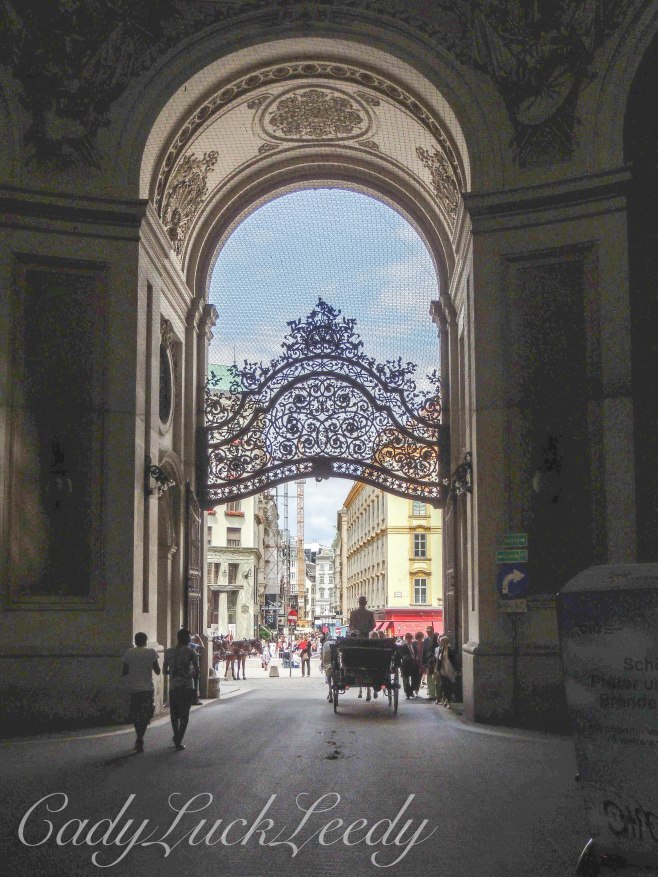
Hofburg Palace, Vienna, Austria
The Good. It is Sunday and we are going to one of the many concerts in Vienna. The choir and full orchestra are presenting a program at 11am High Mass at the Augustinian Church (Augustinerkirche), located on Josefsplatz. The church was founded in 1327 by Duke Frederick, the Handsome, with a cloister of Augustinian friars. In 1634, it became the parish church of the imperial church and is now part of the vast Hofburg Palace complex. Here the Habsburg’s wedding of the Archduchess Maria Theresa in 1736 to Duke Francis of Lorraine, the wedding of Archduchess Marie Louise in 1810 to Emperor Napoleon Bonaparte of France, and the wedding of Emperor Franz Josef in 1854 to Duchess Elisabeth (Sisi) of Bavaria, took place. The church looks unremarkable from the outside, but the Gothic interior is exquisite. We get there early to get a good seat in one of the pews up front. Soon it is standing room only. Let the music and Mass begin!

Augustinian Church, Vienna, Austria

Augustinian Church, Vienna, Austria

Augustinian Church, Vienna, Austria
The Best. Coming out of Mass we walk over to St Peters Church. (Peterskirche) This church site dates back to the Middle Ages and was built on the site of the Roman encampment in the Graben. In 1661 the church burned down and a new church was built when Leopold I took a vow to rebuild this church when Vienna was ravaged by the plague in 1679. This church was the first domed structure in baroque Vienna and fashioned after St Peter’s Basilica in Rome. Situated in a very compact space, closed in between the modern Vienna, once inside, the interior is rich with gold stucco. Today we are there as a wedding couple are exiting the church and we observe the church decorated beautifully for the wedding!

St Peter’s Church, Vienna, Austria
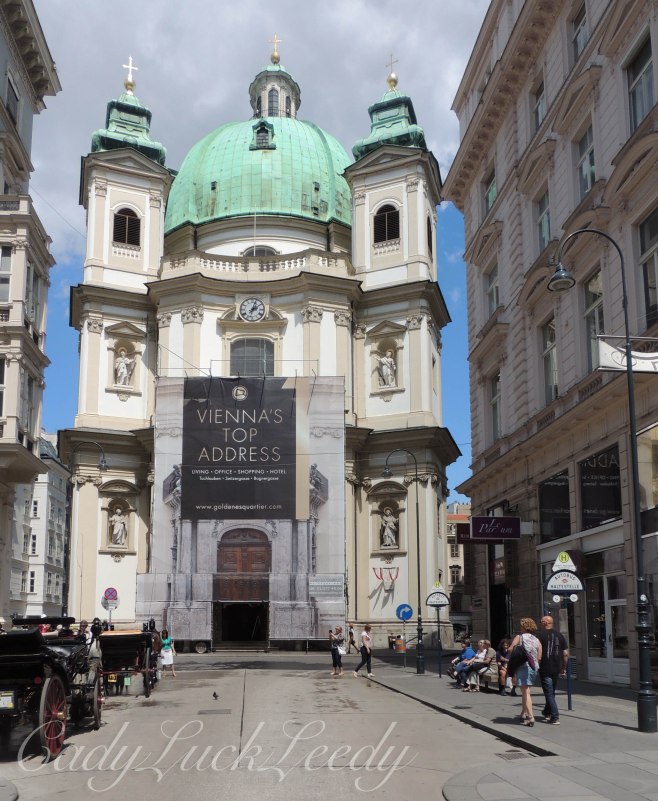
St Peter’s Church, Vienna, Austria

The Wedding Couple, St Peter’s Church, Vienna, Austria

St Peter’s Church, Vienna, Austria
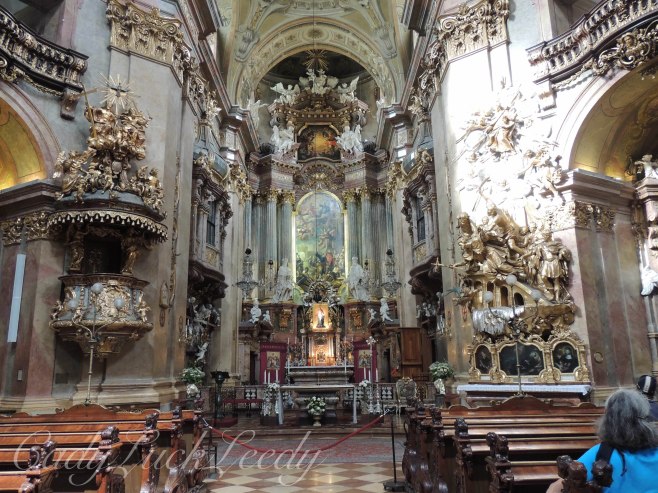
St Peter’s Church, Vienna, Austria

St Peter’s Church, Vienna, Austria

St Peter’s Church, Vienna, Austria
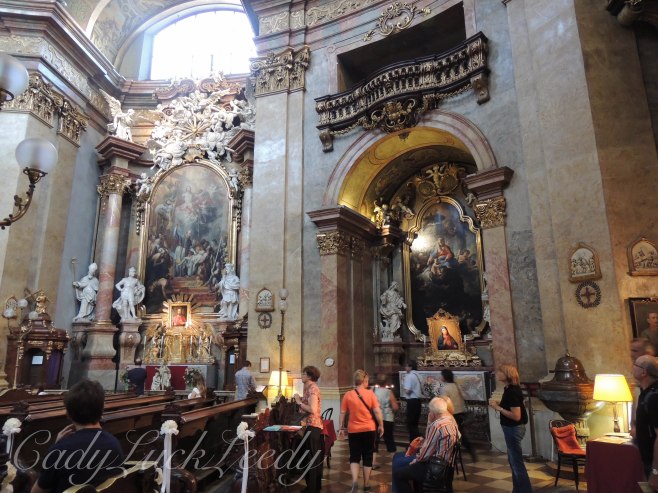
St Peter’s Church, Vienna, Austria
The Sad. Next, let’s see how Emperor Franz Josef and Sisi lived in the Imperial Apartments at the Hofburg Palace. Going up a large marble staircase, turning and going up another set of steps we reach the royal floor and the Sisi Museum. Now, this is my short rendition of Sisi’s life. Franz Josef at twenty three, was engaged to Sisi’s sister, Helene, in a diplomatic marriage. However, once he saw Sisi, age sixteen, all bets were off and he defied his domineering mother and married Duchess Elisabeth (Sisi). Within ten months, Sisi gave birth to their first child, Sophie. Franz Josef’s demanding mother didn’t think Sisi was old enough or smart enough to handle royal life, so she took over everything that concerned Sisi; the children, and the royal household affairs. That included naming the couple’s first born after herself, Sophie, and taking the child away from Sisi, a decision that continued for all the children to follow. Sisi, bored with her non-existent life, except that of brooder, became obsessed about her weight and followed a rigorous workout regime, putting a workout room in her private apartments. Fixated on her appearance, after her ritual cold bath in the morning, she spent three hours daily having her ankle length hair washed, combed and braided. Every evening there was an oil bath and a slab of veal was placed on her face to prevent wrinkles. At five foot eight and 100 pounds she wore a leather fitted corset to keep her waist at sixteen inches and after four children her waist never exceeded nineteen and one half inches. Her weight at times would drop to 95 pounds after fasting for days. Truly her looks must have been the only thing she felt she had control of. After ten years of marriage and four children, Sisi chose to spend very little time in Vienna, frequently visiting Hungary. After the age of thirty she refused to sit for her portrait and have any pictures taken of her. She never smiled because she hated her teeth.
Tragedy struck 1889, with the death of Sisi’s only son, Rudolf, the Crown Prince of Austria, and his mistress, in a murder-suicide pact at a hunting lodge at Mayerling. Sisi withdrew further from court duties and traveled widely, unaccompanied by her family. While traveling in 1898 she was stabbed to death by an Italian anarchist, who had missed his chance to assassinate another royal family member, Prince Phillippe, Duke of Orleans. Sisi had served as the longest princess-consort of Austria, at 44 years. Next in line of succession after Rudolf was Archduke Karl Ludwig, Franz Josef’s younger brother. However, a few days after Rudolf’s death Karl Ludwig renounced his succession rights to his oldest son, Archduke Franz Ferdinand, who became heir presumptive. Franz Ferdinand’s assassination in 1914 sparked WWI. What a mess of lives all that turned out to be!

Imperial Apartments, Hofburg Palace, Vienna, Austria

Imperial Apartments, Hofburg Palace, Vienna, Austria

Imperial Apartments, Hofburg Palace, Vienna, Austria

The Horse and Buggies, Vienna, Austria

The Horse and Buggies, Vienna, Austria

The Horse and Buggies, Vienna, Austria
Taking a break from all the sadness at the Hofburg Castle we pass the horse and carriage stands and decide to take a ride around the city and see what else is inside the Ringstrasse. I love the look of Volksgarten Park and make my way to the benches and find the BEAUTIFUL!

SEATS! Volksgarten, Vienna, Austria

Volksgarten, Vienna, Austria

Volksgarten, Vienna, Austria
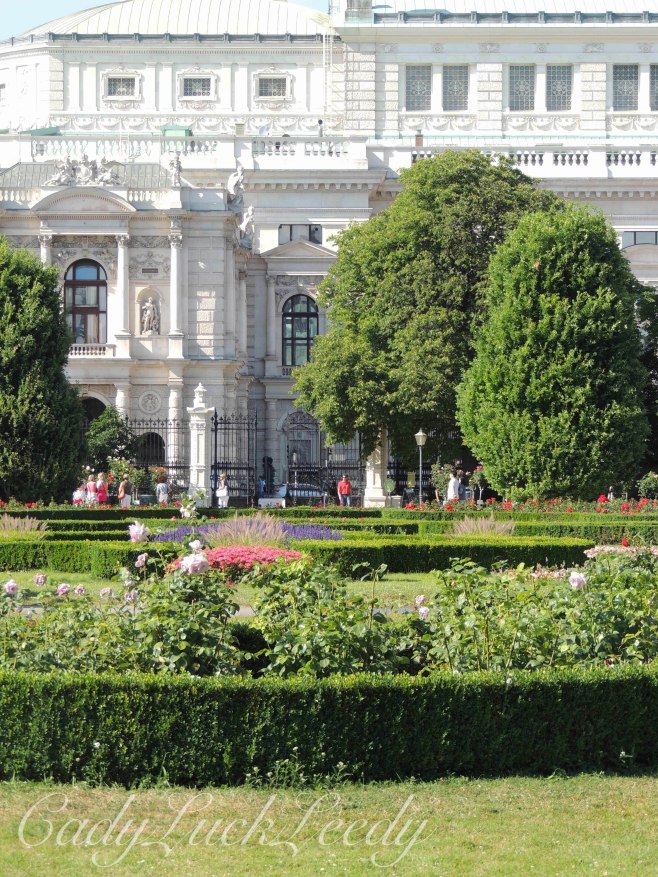
Volksgarten, Vienna, Austria

Volksgarten, Vienna, Austria
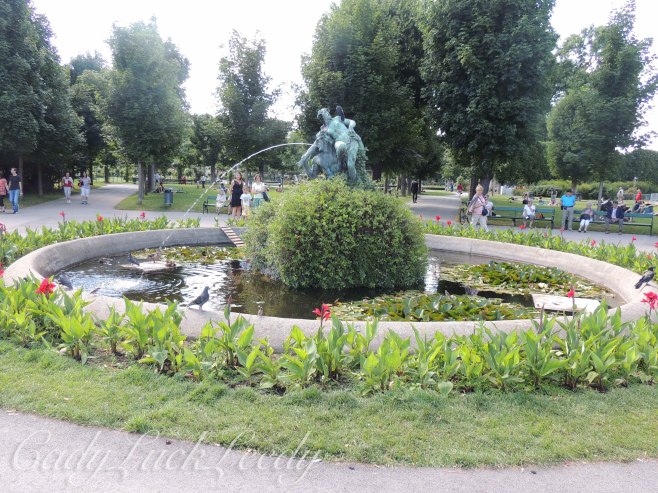
Volksgarten, Vienna, Austria

Volksgarten, Vienna, Austria

Volksgarten, Vienna, Austria

Volksgarten, Vienna, Austria

Sisi Monument, Volksgarten, Vienna, Austria
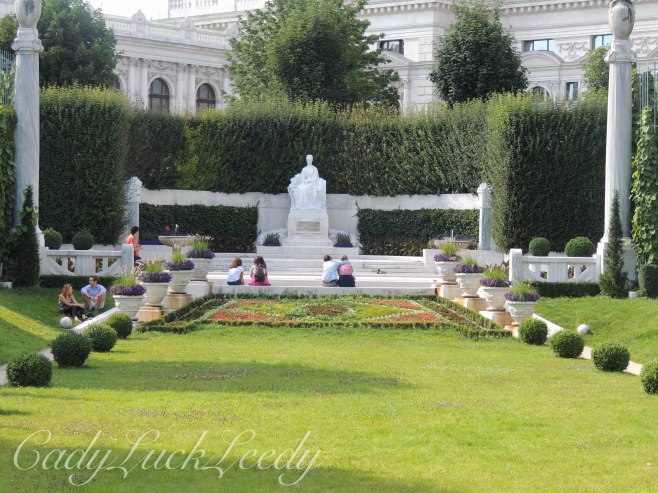
Sisi Monument, Volksgarten, Vienna, Austria
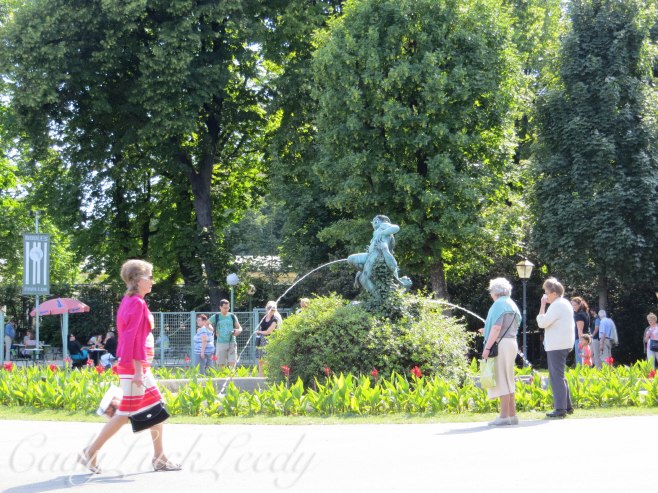
Volksgarten, Vienna, Austria
Here the children chase the pigeons, the women talk and try to keep up with the children, and the men read their newspapers while enjoying a fine summer day. The flowers are in bloom and the fountains are overflowing. What contrast, what beauty! Enjoy!






